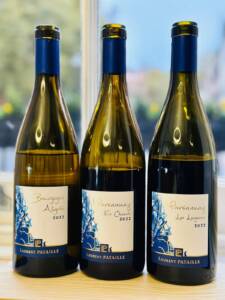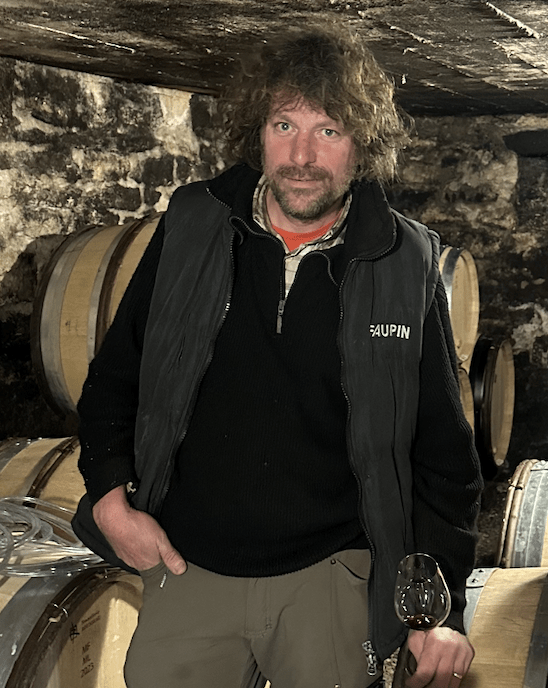Laurent Pataille, Sylvain’s younger brother, established his domaine in 2010, farming just one hectare.
Laurent grew up with limited family vineyards, as their father only owned a half-acre of vines acquired in the 1980s. Inspired by summers spent at a family domaine in Médoc and their father’s vineyard work, Laurent pursued viticulture and oenology studies at Beaune and Dijon, followed by internships at Château Calon and René Muré.
He honed his skills over five years at Château de Tracy, gaining expertise in high-density planting. Laurent applies his technical expertise by treating each vineyard parcel individually, using modern techniques while respecting traditional practices. His precision and terroir-focused approach define his work. In 2008, Laurent returned to Burgundy to work alongside Sylvain, a collaboration that continues to this day
Since 2010 Laurent has modestly expanded his domaine. In 2013, he planted a high-density vineyard (20,000 vines per hectare) in Marsannay Es Chezots, inspired by his experience at Château de Tracy and the influence of Olivier Lamy. He further grew his holdings by renting a vineyard of Aligote in La Champagne Haute in 2015, purchasing a small plot of Les Longeroies in 2019 and further replanting in Marsannay and Champ Forêts and the latest in Montrecu, increasing the holding from 1 ha to 2.5ha.
Laurent has practised organic farming from the start, incorporating biodynamic preparations to enhance soil health, vine vitality, and ecosystem balance. A leader in organic and biodynamic viticulture, Laurent emphasizes biodiversity with practices such as cover crops and horse-plowing, avoiding synthetic treatments in favour of natural remedies. His methods strengthen vine resilience and allow grapes to reach their full potential.
In the cellar, his winemaking is marked by minimal intervention and an unwavering focus on purity. Grapes are hand-harvested at optimal ripeness and fermented with indigenous yeasts to preserve the natural character of the fruit. He ages his wines in French oak barrels, carefully managing the use of new wood (typically 10–30%) to enhance complexity without overshadowing the wine’s essence. Sulfur use is minimal, and filtration is avoided to maintain the wines’ vibrancy and texture.




